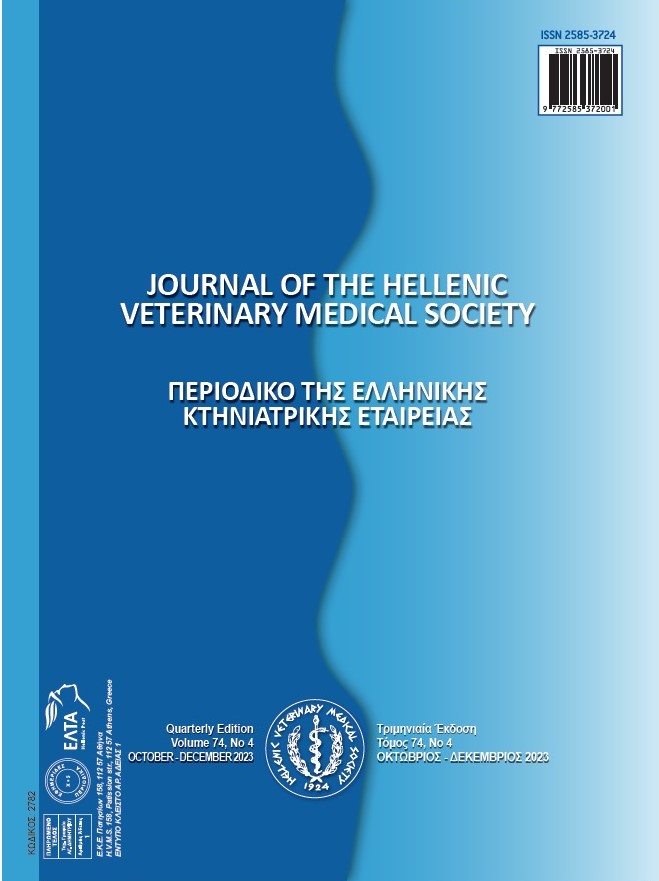Molecular characterization of peste des petits ruminants virus strains circulating in sheep and goats in Iran

Abstract
Peste des petits ruminants virus (PPRV) infection is an acute to sub-acute viral disease in both domestic
and wild small ruminants. Recent outbreaks of PPRV in Turkey’s Marmara region and in Europe (Georgia and Bulgaria) highlight the potential risk of PPR spreading to a larger geographic area. In order to achieve a successful control and
eradication program, evaluating etiyological data prior to developing disease control strategies is an essential criterion.
The aim of this study was to perform molecular characterization of PPRVs found in sheep and goats in Iran. For this
purpose, a total of 341 animal specimens were collected from sheep (n = 271) and goats (n = 70) with clinical signs of
PPRV infection from twelve different provinces. RT-real time-qPCR assay based on nucleoprotein (N) with a plasmid
standard reference, which is rapid and sensitive for the diagnosis of infection, was used for the detection of PPRV nucleic acid. In the RT-real time-qPCR assay, a positivity rate of 29,91% (102/341) was detected for PPRV nucleic acid.
At the nucleotide level, the N-gene partial sequence analysis of sixteen viral sequences obtained from four provinces of
Iran showed 96.8%-100% similarity and 97.6%-100% and 88.2%-89% similarity to the Turkey2000 reference isolate
and Nigeria 75/1 vaccine strain, respectively. Except for two viral sequences, the secondary protein structure of the
approximately 80 amino acid long nucleoprotein region in the sixteen viral sequences revealed structural similarity
in the alpha-helix and beta-leaf structures for all PPRVs of Iranian origin. In the phylogenetic tree, PPRVs circulating
in Iran are homologous, belong to genetic lineage IV, and are closely related to the Turkey2000 isolate. According to
the results of this work, it is emphasized that PPRV circulates in Iran, causes outbreaks and deaths, and should be controlled. In addition, further studies on the molecular analyses of the N protein of the Iranian isolates will help clarify
the origin of the disease and determine the genetic diversity of the virus.
Article Details
- How to Cite
-
Babaoglu, A., Mahzounieh, M., & Bilge Dagalp, S. (2024). Molecular characterization of peste des petits ruminants virus strains circulating in sheep and goats in Iran. Journal of the Hellenic Veterinary Medical Society, 74(4), 6707–6718. https://doi.org/10.12681/jhvms.31442 (Original work published January 24, 2024)
- Issue
- Vol. 74 No. 4 (2023)
- Section
- Research Articles

This work is licensed under a Creative Commons Attribution-NonCommercial 4.0 International License.
Authors who publish with this journal agree to the following terms:
· Authors retain copyright and grant the journal right of first publication with the work simultaneously licensed under a Creative Commons Attribution Non-Commercial License that allows others to share the work with an acknowledgement of the work's authorship and initial publication in this journal.
· Authors are able to enter into separate, additional contractual arrangements for the non-exclusive distribution of the journal's published version of the work (e.g. post it to an institutional repository or publish it in a book), with an acknowledgement of its initial publication in this journal.
· Authors are permitted and encouraged to post their work online (preferably in institutional repositories or on their website) prior to and during the submission process, as it can lead to productive exchanges, as well as earlier and greater citation of published work.


